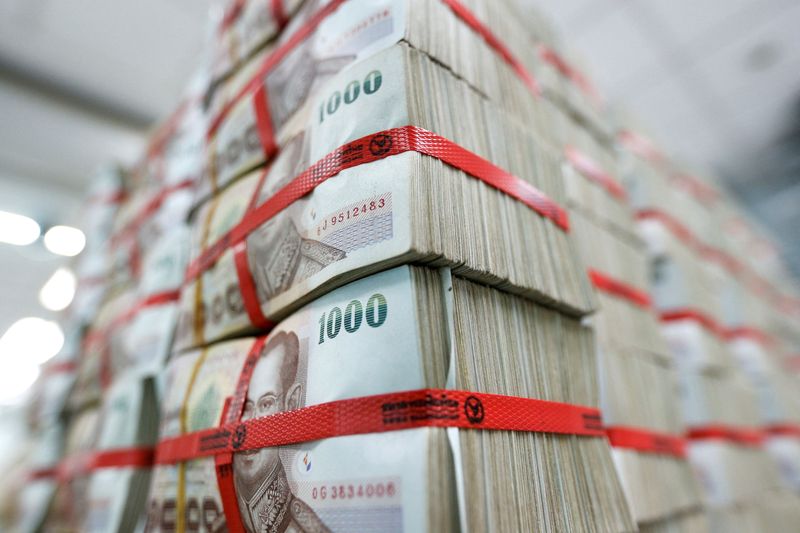Analysis-Investors look to emerging markets as planets align for end

© Reuters. FILE PHOTO: Thai baht notes are seen at a Kasikornbank in Bangkok, Thailand, May 12, 2016. REUTERS/Athit Perawongmetha/File Photo
By Saqib Iqbal Ahmed
NEW YORK (Reuters) – As the U.S. dollar tumbles from multi-decade highs, some investors are betting emerging market currencies will be big winners from a sustained reversal in the greenback.
The MSCI International Emerging Market Currency Index is up nearly 5% from its lows and notched its best monthly gain in about seven years in November, as expectations that the Federal Reserve will soon slow the pace of its interest rate hikes bolstered the case for investors betting on emerging market currencies.
Signs of a broader turn in dollar sentiment are visible in the buck’s 8% decline against a basket of developed market currencies from its September highs. In futures markets in November, speculative traders swung to a net short position on the U.S. dollar for the first time in 16 months, calculations by Reuters based on U.S. Commodity Futures Trading Commission data showed.
“The planets are lining up for a dollar bear market,” said Paresh Upadhyaya, director of fixed income and currency strategy at Amundi US.
Emerging market currencies have outperformed their developed market counterparts this year, with MSCI’s index of emerging market currencies down 5% year-to-date, while the dollar’s G10 peers have lost nearly twice as much.
GRAPHIC: EM currencies https://fingfx.thomsonreuters.com/gfx/mkt/akpeqzkxmpr/Pasted%20image%201670273827457.png
In addition to the possibility of slower Fed hikes, investors cited expectations that China will loosen its strict COVID-19 containment policy and comparatively rich yields found in many EM countries as reasons for adding to positions in emerging market currencies.
Amundi’s Upadhyaya is focusing on the currencies of high-yielding emerging market countries that have balanced current accounts and smaller budget deficits, including the Brazilian real, Peruvian sol= and Indian rupee.
Some emerging markets offer attractive yield even adjusted for inflation. For instance, the inflation-adjusted yield on the U.S. 10-year Treasuries is at 1.08%, compared with 6.07% for the Brazilian equivalent.
CHINA WATCH
Investors have cheered the prospect of a shift in China’s COVID-19 policy, after rare street protests increased pressure on officials to ease some rules. China – the world’s second-largest economy and a key consumer of the commodities produced by many emerging market countries – is set to announce a further easing of its COVID curbs as early as Wednesday, sources said.
The is up about 5% against the dollar since late October and posted its best weekly performance against the U.S. currency in at least two decades on Friday, while the rose 27% in November, its best month since October 1998.
“I think the cat is out of the bag. They can’t go back to their pure restrictive zero COVID policy,” said Jack McIntyre, a portfolio manager at…
Read More: Analysis-Investors look to emerging markets as planets align for end
